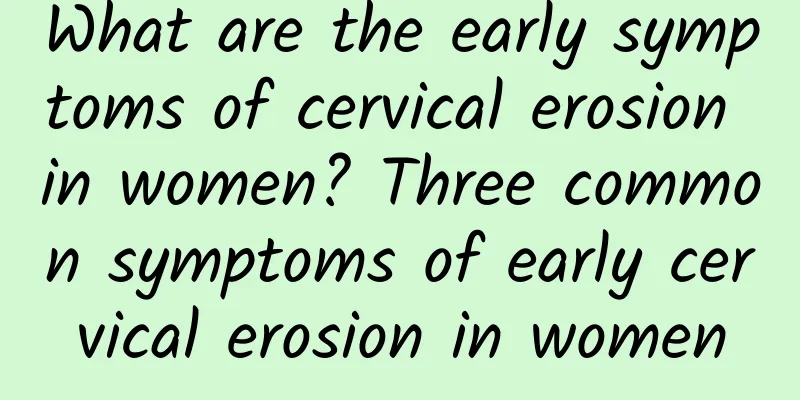TCM Syndrome Differentiation and Treatment of Various Types of Dysfunctional Uterine Bleeding

|
Dysfunctional uterine bleeding belongs to the category of "uterine bleeding" in traditional Chinese medicine. "Beng" means continuous discharge, while "leakage" means dripping discharge. Traditional Chinese medicine believes that Dysfunctional uterine bleeding originates from the kidneys, located in the Chong and Ren meridians, and changes in the qi and blood, manifesting as untimely discharge of uterine blood. Treatment principles Flexible use of the method of "blocking the flow, clearing the source, and restoring the original state" can be used, or both blocking the flow and clearing the source can be used, or clearing the source and restoring the original state can be used simultaneously. Blocking the flow means stopping bleeding, and although it is "treating the symptoms in an emergency", it is the first step in treating functional uterine bleeding. However, stopping bleeding is not just about astringing. It is necessary to use warming or clearing, or tonic or astringent methods according to the cold, heat, deficiency or excess of the symptoms, and pay attention to the combination of deficiency and excess, and the confusion of cold and heat, and weigh the treatment methods and prescriptions. Syndrome differentiation and treatment 1 Heat syndrome Clear and stop, used for heat syndrome of functional bleeding. Symptoms include heavy bleeding, bright red blood, often related to liver and kidney yin deficiency, hyperactivity of yang fire, and disturbance of the blood sea. Treatment should use clearing and nourishing products, such as peony bark, raw rehmannia, white mulberry, dandelion, etc. 2 Cold syndrome Warming and stopping, for patients with functional bleed and coldness. Symptoms include small amount of bleeding, light color, and cold pain in the lower abdomen. It is not suitable to use pungent, slippery, dry and hot medicines, but it is recommended to use deer antler glue, Morinda officinalis, Cibotium barometz, Cuscuta chinensis, as well as ginseng and Astragalus to warm yang and replenish qi, and replenish fire in water. 3. Qi and blood imbalance It is used to treat liver and kidney deficiency with qi and blood imbalance, weak function, and dysfunctional blood circulation syndrome of the three yin and three yang of liver, kidney, spleen and stomach. The treatment of liver and kidney deficiency is mainly to nourish the liver and kidney and harmonize yin and yang, such as Ligustrum lucidum, Eclipta prostrata, Parasitic plant, Eucommia ulmoides, etc. 4. Qi stagnation and blood stasis It stops diarrhea and is used for those with blood stasis and qi stagnation. Clinical symptoms include chest and abdominal distension and pain, dark blood color and blood clots. It is suitable for promoting blood circulation and removing blood stasis, and is used for common causes. Commonly used herbs include red peony root, madder root, milkwort, three-edged vine, curcuma, and Panax notoginseng. |
<<: Biopsy diagnosis of mixed dystrophic vulvar leukoplakia
>>: Dietary remedies for treating functional uterine bleeding
Recommend
The more you eat, the hungrier you get? Eating juice and white bread will not make you full but may lead to obesity
Are you more hungry after just eating than before...
How to prevent ectopic pregnancy
Symptoms of ectopic pregnancy are very common in ...
Other causes of pelvic inflammatory disease
As we all know, cervicitis is a very serious gyne...
What are the treatments for pelvic inflammatory disease?
With the improvement of medical level, there are ...
Reasons why adnexitis often recurs
Adnexitis has a high prevalence in today's li...
Let's talk about the causes of adnexitis
Adnexitis is a comprehensive inflammation, which ...
What are the obvious symptoms of pelvic inflammatory disease?
Obvious symptoms of PID include lower abdominal p...
What tests should be done to prepare for pregnancy after a missed abortion?
In order to ensure that the body returns to norma...
What should I do if I find out about uterine fibroids after pregnancy? What are the treatment methods for uterine fibroids?
During pregnancy, if there are uterine fibroids, ...
Is menstrual irregularity a common symptom of uterine fibroids?
Uterine fibroids are a common gynecological disea...
What causes headaches after miscarriage? Here are 6 reasons
Some people may experience headaches after childb...
What is adnexitis
Adnexitis is very common, but there are still a l...
Beautiful back in 1 minute! Correct your posture by doing the anti-cellulite towel exercise
In the past, when we mentioned hunchbacks, we wou...
How to prevent irregular menstruation in women? 3 preventive measures for irregular menstruation in women
Once irregular menstruation occurs, female friend...
Interval walking is more powerful for exercising thighs and improving muscle endurance
Are you still doing the same old normal walking? ...









